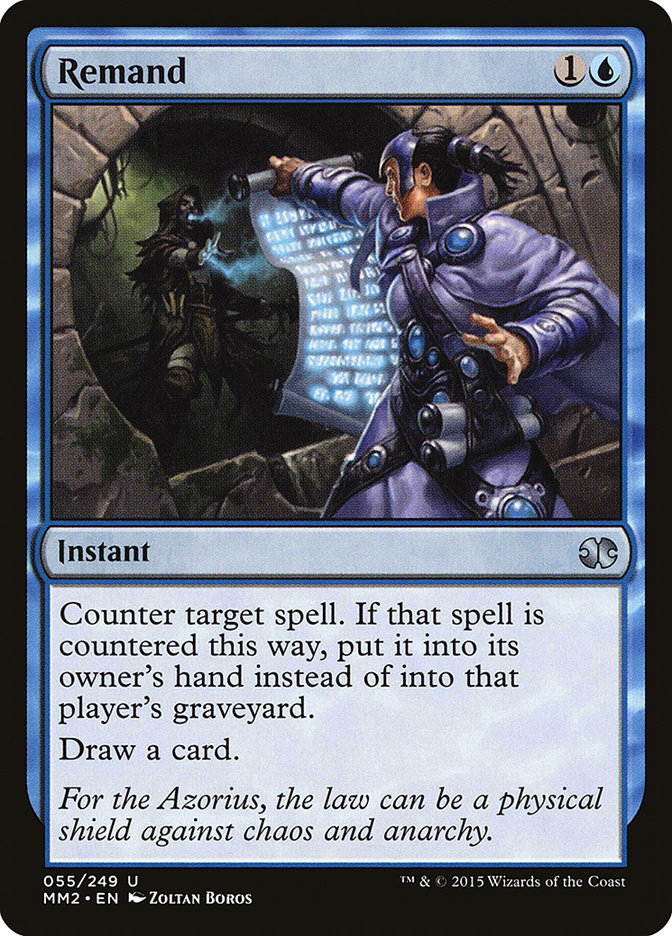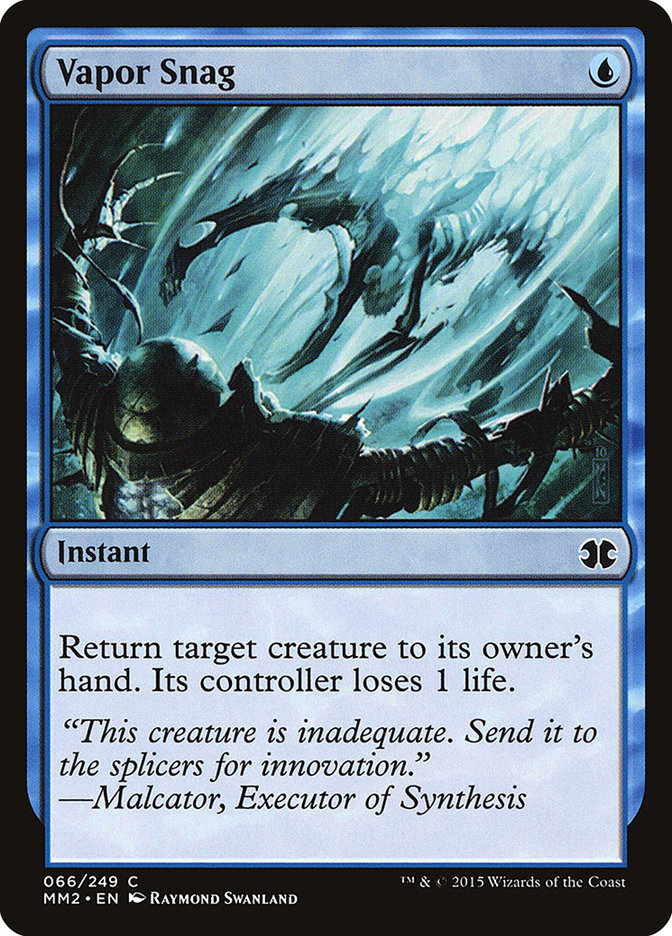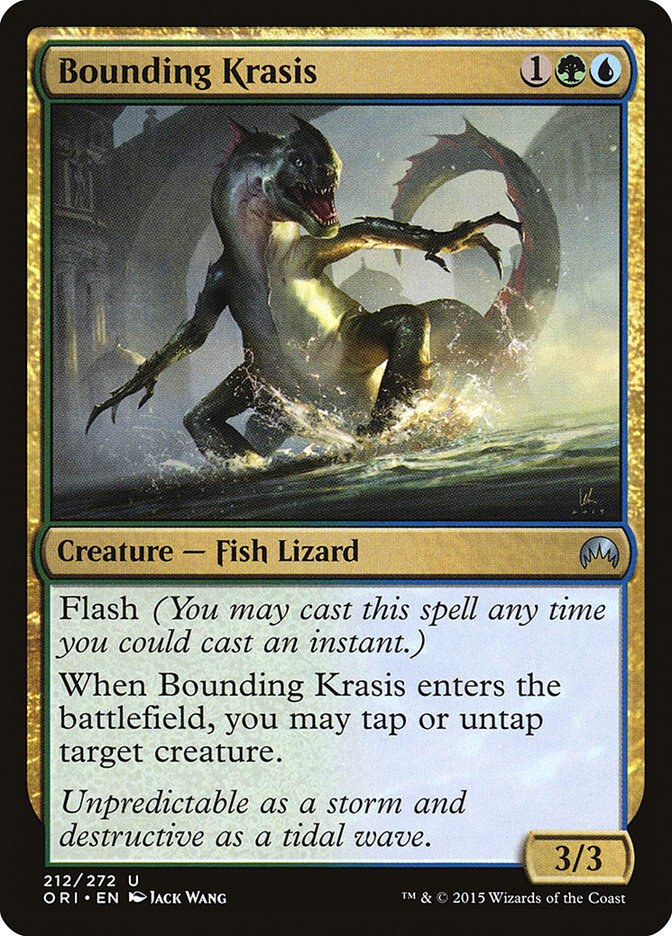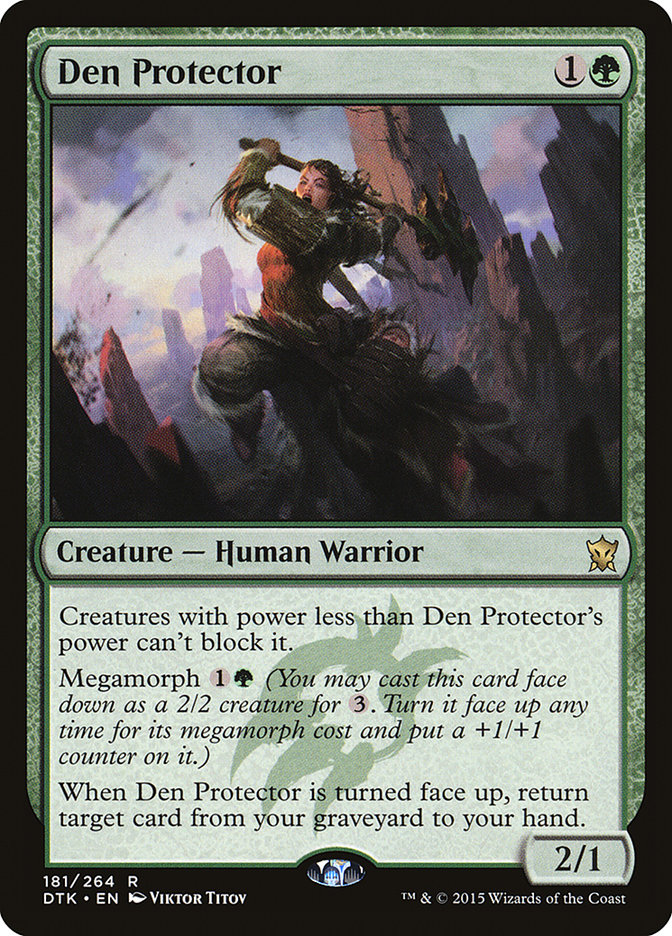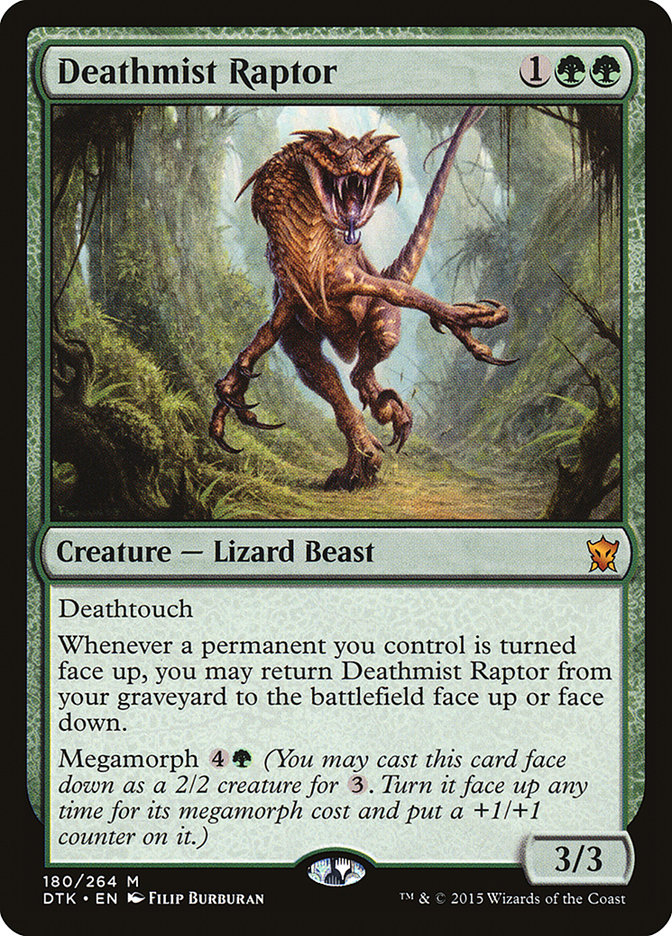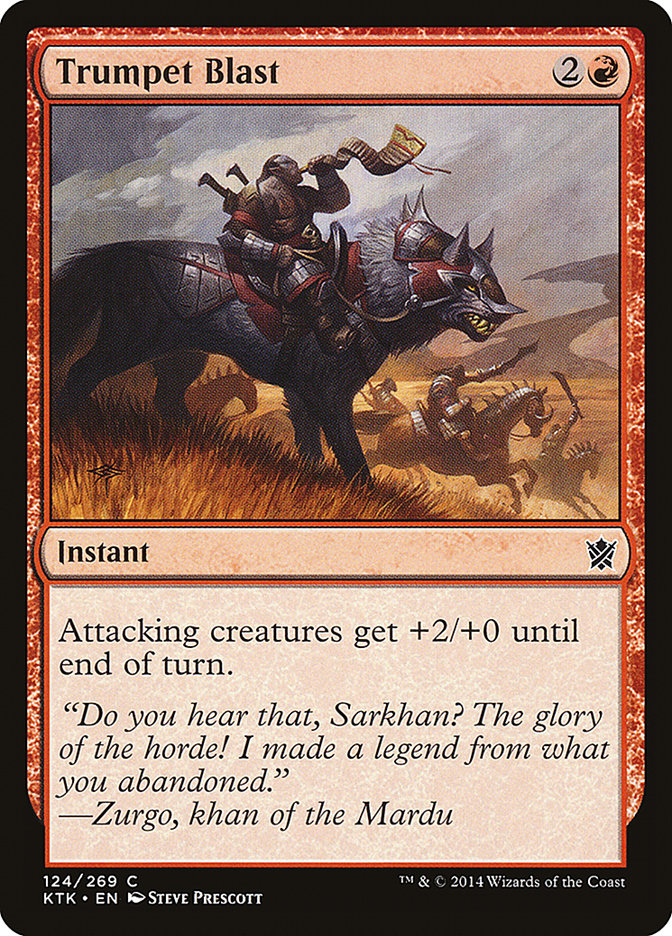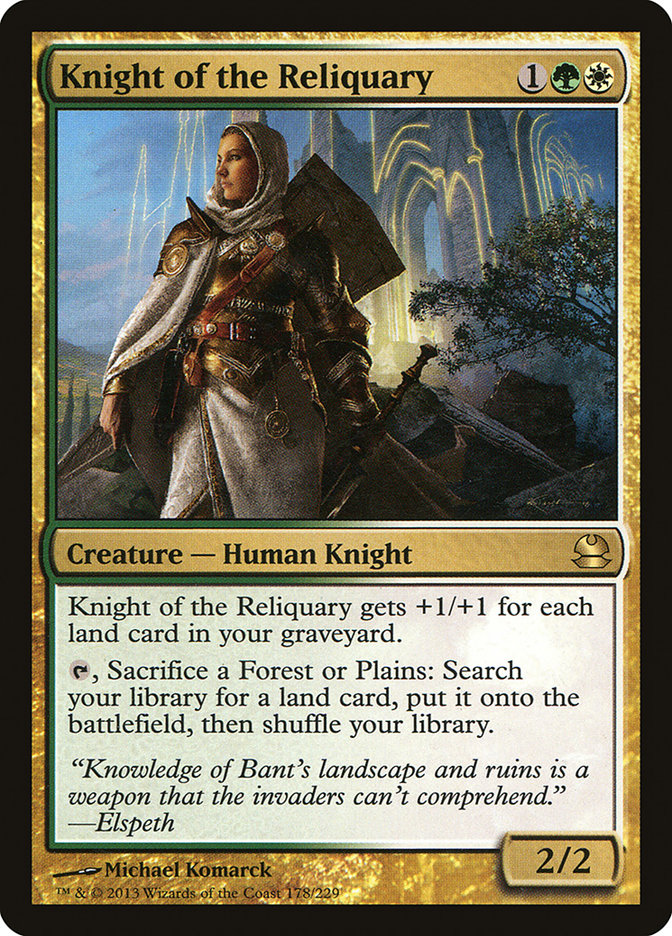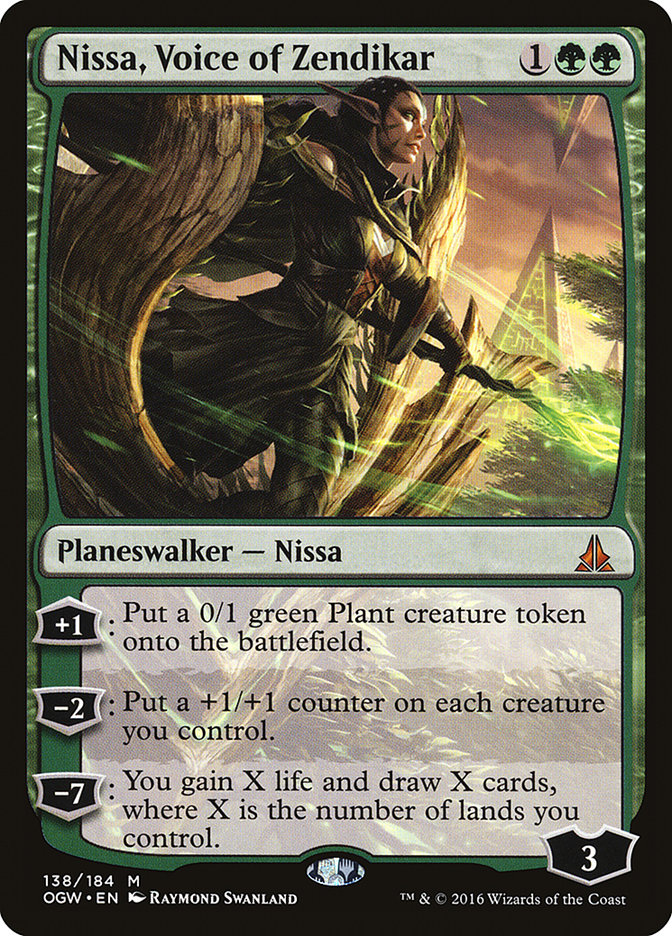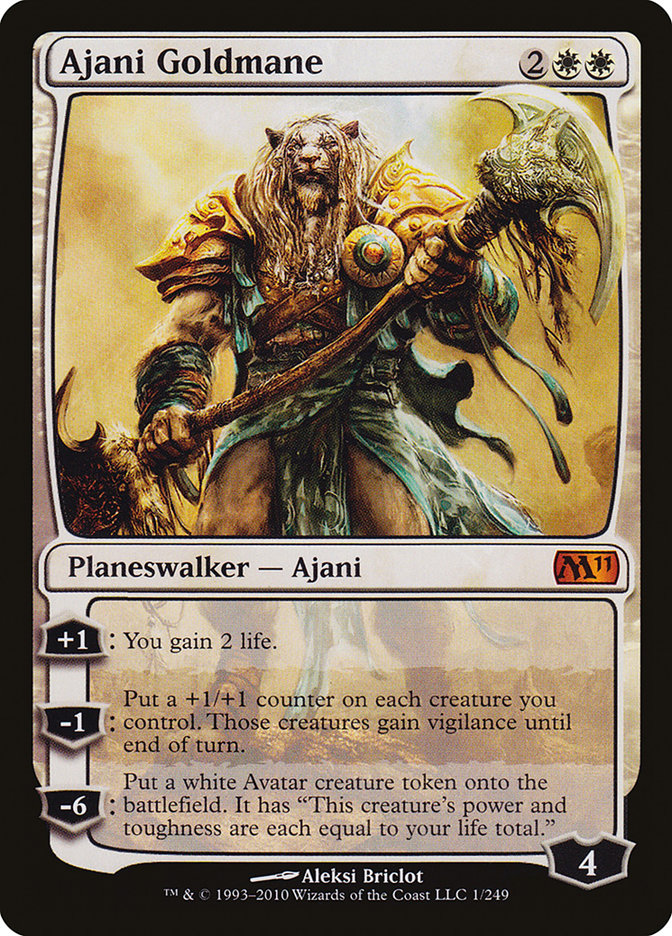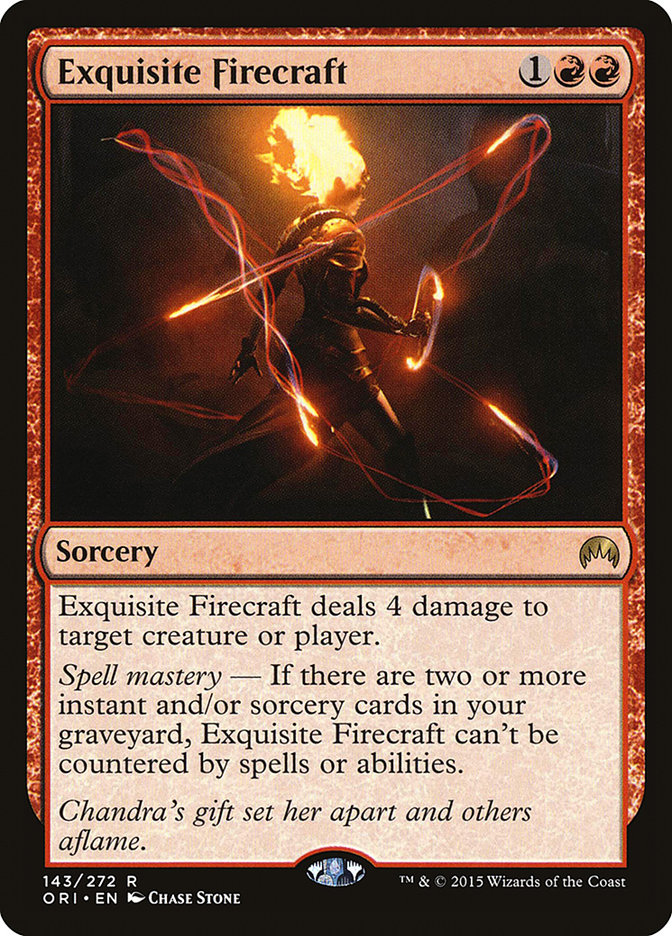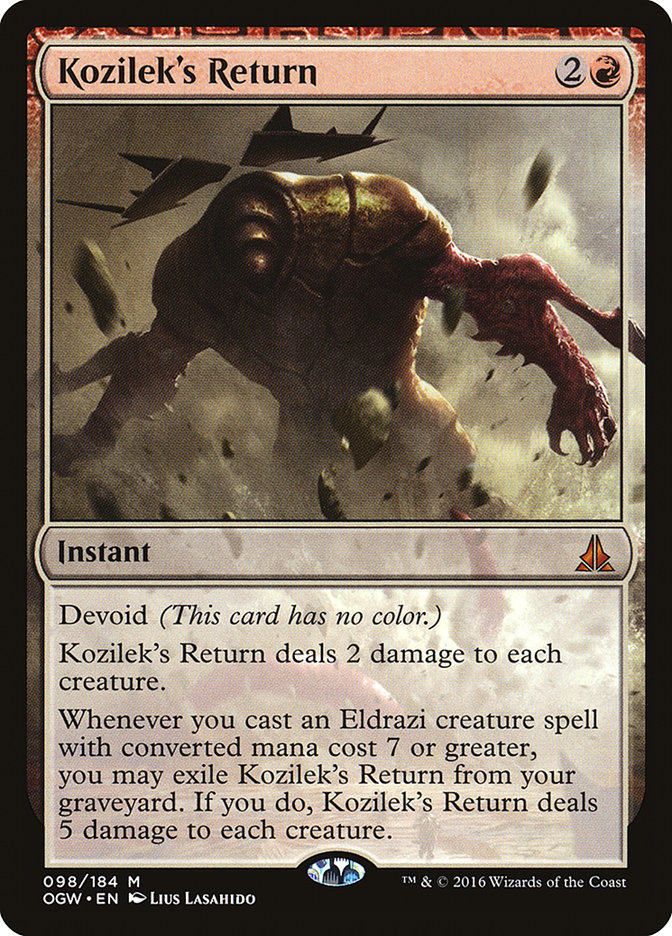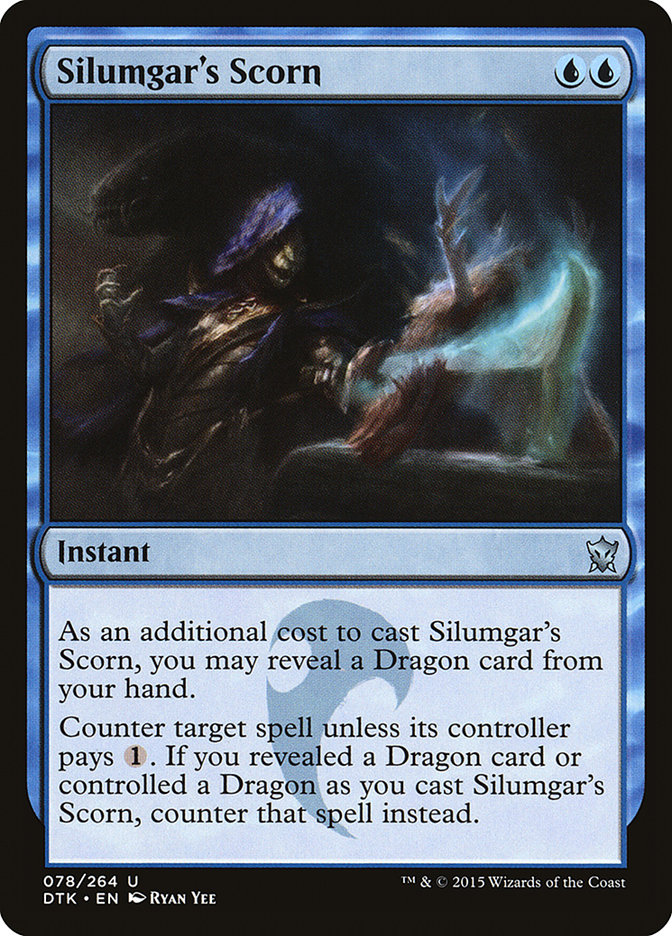1. Reflector Mage is from the same mold as Remand, Vapor Snag, and Jace, the Mind Sculptor.
Oath of the Gatewatch skewed Modern a ton at #PTOGW, but what it did to Standard may be even more extreme. Reflector Mage is a messed-up Magic card. In a year and a half, I predict we will all look back on this card and say “good riddance.” I also predict I’ll keep using this line and article link that whole time, only updating the time until it leaves appropriately.
Your opponent tries to make a very reasonable play and is immediately punished by you reversing it at basically no cost. In this case, the card explicitly tells them they can’t try to do the same thing again the next turn instead of the implicit “you know the same thing is going to happen again” of those other cards.
An important part of all of the tempo cards I listed is that they add just enough value that you are locked in ahead on the exchange. Vapor Snag brings them to zero life really quickly, Remand puts you neutral on cards so you are just counting mana, and Jace was just Jace. With Reflector Mage, the 2/3 body is perfectly sized to brick everything small enough to not get completely tempo-wrecked by the bounce.
Unlike these other cards, I’m not even sure what test you are supposed to pass with Reflector Mage. Bouncing a one-drop is fine as you Time Walk them on recasting it. Bouncing an enters-the-battlefield trigger is the same. The only thing I haven’t wanted to bounce with Reflector Mage is Reflector Mage. When my best answer to a creature is “play spells, not creatures,” something went really wrong.
2. I have no idea why anyone doesn’t play Bant.
Creatures (25)
- 1 Warden of the First Tree
- 4 Den Protector
- 4 Deathmist Raptor
- 4 Jace, Vryn's Prodigy
- 4 Bounding Krasis
- 4 Reflector Mage
- 4 Sylvan Advocate
Lands (25)
Spells (10)
Sideboard

If one Reflector Mage is good, two are better. The best ways to make more Reflector Mages than your opponent are Collected Company and Jace, Vryn’s Prodigy. Collected Company is also the best way to beat opposing Reflector Mages. You can make multiple creatures a turn and ignore casting restrictions.
The best way to both fight and enable the best creature is the same card, and it’s probably the best non-land card in the format. Blue also gives you the best sideboard card to fight the Collected Company strategies in Dispel. It’s some really inbred nonsense.
You don’t have to stop at Bant. Black and Rally the Ancestors are fine. You could probably even go black and play Anafenza, the Foremost and Murderous Cut without Rallying and be okay. I probably wouldn’t play red spells, but you can try.
All I know is I’m playing the following 26 cards in every Standard event until rotation: four Flooded Strand, four Windswept Heath, two Canopy Vista, one Prairie Stream, one Plains, one Forest, one Island, four Reflector Mage, four Collected Company, and four Jace, Vryn’s Prodigy.
For those wondering, this is the Bant Company deck I played in the Magic Online Championship Series Quarterly event. I didn’t like Nissa, Vastwood Seer, but I wouldn’t mind trying a couple of Eldrazi Skyspawner like Brad Nelson had for the same spot of “creatures 26-27.” The sideboard was nice, with the second Silkwrap being a flex slot.
Creatures (26)
- 1 Warden of the First Tree
- 4 Den Protector
- 4 Deathmist Raptor
- 4 Jace, Vryn's Prodigy
- 1 Nissa, Vastwood Seer
- 4 Bounding Krasis
- 4 Reflector Mage
- 4 Sylvan Advocate
Lands (25)
Spells (9)

3. Non-Bant can beat Bant, but needs luck.
You can beat Bant shells with non-Bant decks. Atarka Red, R/B Dragons, and Esper Control probably have the best chances. People seem to think Eldrazi Ramp is fine too, but I don’t think I’ve come close to losing to that deck. The problem is that all of these decks rely heavily on not stumbling when they have minimal control over it.
All Bant has to do to beat you is draw lands and spells and play and cast them. If you get into a midrange spellfest with them, you are not coming out ahead. They have too many tricks, too many ways to bury you in cards.
With Atarka Red, you need a one-drop to come out ahead of the Bant deck. With Esper, you need lands and answers up the curve or you get run over. With Ramp, you need to hit your mana and threats pretty much perfectly and then hope you don’t get nailed with a flash creature or Collected Company regardless. It always felt like the default situation was the Bant deck overwhelming its opponent.
R/B Dragons might be the only exception or near-exception here, and it really is on the back of Kolaghan, the Storm’s Fury. Your plan to compete with Bant is to get into range of one-shotting them with a haste creature and hoping they don’t have instant-speed interaction to stop you. Honestly, that sounds a lot better than hoping turns 2 through 5 play out perfectly.
4. Bounding Krasis is the truth.
Playing Magic at instant speed is awesome. You get to make your decisions with full information about your opponent’s plays, which is a massive edge. Any time you get to cast creatures at instant speed is even better, or at least it is now in the era of great creatures.
Bounding Krasis looks innocuous on the surface, but just being a reasonably sized body that lets you pick your spot on overextending into sweepers is very good. It’s also basically a Fog, as your opponent suddenly has the fear of attacking into tapped creatures that could untap and block. Or, even worse, they might attack with too many things into a lethal counterattack after you tap one blocker and bounce another. It’s also a playset of answers to the Kolaghan, the Storm’s Fury game plan out of R/B Dragons I mentioned earlier. They dash their Dragon, you tap it and Time Walk them.
5. The numbers for Collected Company in Bant Company are higher than expected.
Normal Collected Company rules: start with 26-29 creatures to hit off Collected Company in your maindeck every match. After sideboarding, 24 is the bare minimum with 25-26 being preferable.
Den Protector messes all this up. The card is a requirement of playing Deathmist Raptor, but it’s about as low as you can get on the Collected Company hit scale without being a blank. Once you are counting that card as four of your 24 hits, Collected Company starts looking a lot worse and suddenly you have a pretty bad deck. This issue is best seen when playing against Rally the Ancestors where, if you sideboard in a ton of hate like Hallowed Moonlight and Dispel, you just lose to them overwhelming you on the battlefield when your Collected Company bricks off.
This is part of why Bounding Krasis is so great. It’s interaction you can hit with Collected Company. You can make your deck do things without having to make your best card bad. The same applies to any creature you can sideboard. Even something like Stratus Dancer is fine because a 2/1 flying creature applies reasonable beatdowns in the format. I had a Harbinger of the Tides over a solid removal spell like Valorous Stance in my sideboard because I just wanted a body.
If you aren’t sure you want to sideboard a card in with a Collected Company deck, don’t sideboard the card in unless it’s a creature or it is a swap for another spell.
6. Winning with Red is wonderful.
This is the much more exciting deck that I almost pulled the trigger on for this event, as designed by my Ultra PRO teammate Corey Burkhart.
Creatures (19)
- 4 Monastery Swiftspear
- 3 Zurgo Bellstriker
- 3 Pia and Kiran Nalaar
- 4 Abbot of Keral Keep
- 2 Thopter Engineer
- 3 Reckless Bushwhacker
Lands (22)
Spells (19)
Sideboard

“Ari, you just added some draft commons to Atarka Red. You can’t put a party hat on a donkey and call it a unicorn.”
There’s actual Trumpet Blast in my Constructed deck. It is arguably one of the most important cards in the deck a lot of the time, and there probably should be a third. If that isn’t exciting to you, we clearly fundamentally disagree about what makes this game great.
Really, this is all just a symptom of how awesome it is to win with red spells. There are very few things more satisfying in Magic than Red Mage-ing someone out. This deck was definitely not better than Bant Company, but it was a lot more fun to play.
Red gives you a lot of opportunities to feel actually smart. Not fake Blue Mage “I used my instant card draw because you didn’t cast a thing for me to counter” smart. Not fake Black Mage “oh look, Duress took the obvious best card in your hand and then you didn’t play Magic” smart. I’m talking “watch your opponents when they realize they left the door open for no reason” smart. I’m talking “if you didn’t do everything exactly correctly, they ended at one instead of zero” smart.
It’s shown about twice a weekend on SCGLive, but watch this classic game where Patrick Sullivan runs circles around Ross Merriam and wins from a spot where he has no right to.
Look at Ross’s soul break, and realize that years later he probably has nights where he stares into oblivion and wonders what went wrong in those six minutes of gameplay.
Playing red is also shockingly U/B with so much information disparity involved. I attacked two Goblins, Abbot of Keral Keep, and Zurgo Bellstriker into Thopter Engineer and Thunderbreak Regent. My opponent made the “obvious” anti-Atarka’s Command block of 1/3 on 1/1 and 4/4 on 2/2, and binned their creatures to Trumpet Blast. Oops, dead. The next game they made a play around Trumpet Blast and just died to the +1/+1 mode on Atarka’s Command keeping my Prowess creatures alive. Oops, guessed incorrectly again, dead.
There’s also a lot of clarity with playing red. When you play midrange, you have a lot of hidden points where your opponent can just draw running above-average cards to win. When this happens you can sculpt your own narrative with “I can’t believe they got so lucky” when it was really just them winning three of four effective coin flips to draw live cards, or you can think about how you could have sequenced to beat that line of draws when the other 60% of the time your line was better.
With red decks it’s just always obvious. You have seven outs to deal the last three. You missed two damage two turns ago that was just free to take. It’s all your fault, or it’s clearly not, and the luck is all very obvious.
Okay, a small amount of it might also be pure griefer. People just hate losing to “crappy red decks that you only play because you can’t afford real cards” or something, and a large part of me appreciates it when they tilt off and I clearly outplayed them with Goblin tokens.
7. Nissa, Voice of Zendikar seems like the real deal.
Meanwhile, Josh Utter-Leyton did decide to go with Goblin tokens for this event and made an exceptional discovery that resulted in a sad ninth place.
9th in the MOCS with a nice lil brew pic.twitter.com/MM8wjDPygU
— Josh Utter-Leyton (@wrapter) February 13, 2016
Creatures (18)
- 4 Monastery Swiftspear
- 3 Zurgo Bellstriker
- 3 Pia and Kiran Nalaar
- 4 Abbot of Keral Keep
- 4 Reckless Bushwhacker
Lands (23)
Spells (19)

I played against Josh in the last round and Nissa felt like he was doing something that legitimately let him pull ahead in a midrange game instead of just trying to steal a game in a stall. It’s basically like Ajani Goldmane in tokens decks all over again.
Repeatedly adding four or more power to your battlefield with a planeswalker ability is a big breaker. It takes up a lot of sideboard space to make the mana work, but let’s be real. How many good sideboard cards did Atarka Red have to begin with?
8. Red cards are bad.
Regardless of how good the actual deck is, the biggest flaw with Atarka Red variants is that the cards it plays are just bad. Once you hit the three- to four-mana mark, everything you do gets outclassed badly, and even worse, they have more on-curve things than you do. In the last few years this delta has gotten really pronounced, to the point that your window to close a game is maybe a couple of turns before the midrange deck has you actually dead.
This is why the one-drop thing is so huge, and why the biggest issue with Atarka Red decks is that their eighth one-drop is basically unplayable. Too many games, they just don’t have a play on turn 1 and are sucked into a losing midrange battle.
Ultimately, this unreliability is why I didn’t register Hordeling Outburst at this event. Nissa, Voice of Zendikar is a step in the right direction, but it also comes at the cost of your one-drop a lot of the time. That means you are trying to out-midrange people, and if you don’t draw your Hordeling Outburst or Pia and Kiran Nalaar too, that gets difficult.
9. Attacking is the loosest.
The one piece of technical play I picked up from playing the Trumpet Blast deck is this: if you are ever wondering if you should trade off creatures for some amount of non-lethal damage, odds are the answer is no.
This deck has no true reach. Four Atarka’s Command and a couple of Wild Slash aren’t killing anyone from more than five life. Your “reach” is in the form of getting an attack in where multiple pumped Goblin tokens are unblocked. Trading them off for one damage each is generally bad unless it’s clear the game state is never letting you attack again, and even then you are accepting a desperation maneuver that is unlikely to pay off.
Maybe it’s time to bring back Exquisite Firecraft to change that…..
10. I could be horribly wrong.
Looking at the results from this event, there is exactly one deck that gives me pause on the “Reflector Mage forever” train.
Creatures (14)
- 3 Rattleclaw Mystic
- 2 Dragonlord Atarka
- 1 Ulamog, the Ceaseless Hunger
- 4 World Breaker
- 4 Sylvan Advocate
Planeswalkers (5)
Lands (25)
Spells (16)

As I briefly mentioned above, I hate Ramp with a passion in this format, especially now that two-drop mana creatures let you get Reflector Mage “Stone Rained,” but the red in this list gives it an angle I’m interested in. Kozilek’s Return is really absurd on the back side of five damage to everything that can clear even a bonus mode Sylvan Advocate. Chandra, Flamecaller and Oath of Nissa let this deck have another backup sweeper that breaks the three-toughness barrier. Chandra’s Wheel of Fortune ability also lets you clear bad hands for a new set of action. This lets the deck play flexible midrange games without compromising its ability to endgame out the true midrange decks.
The other deck I’ve been interested in is Grixis Dragons, which completely destroyed my Bant Company deck in a League. Silumgar’s Scorn is a really overpowered card when active, and the deck also gets to play Kalitas, Traitor of Ghet with one-drop red and black removal.
Kalitas was just an answer to Rally the Ancestors at first, but I’m fairly sure it will be seen as a top-notch threat as we move forward into Standard formats with the card. It recovers very well against aggro, can play the Huntmaster of the Fells-style two-for-one game when paired with a cheap removal spell, and rapidly gets out of hand if you just make a single token by sacrificing it and becoming a 5/6 lifelinker.
I’m unsure either of these decks will withstand significant testing, but the point that ties them together is similar. There are a lot of high-powered spells to play in Standard. If anything stands a chance against Bant strategies, it’s going to come about as a result of people mashing the best cards together in a new way that maximizes specific play patterns. Same as last year, synergy is not about linearity, but instead about optimizing midrange suites to have the best coverage and plans against the field.



